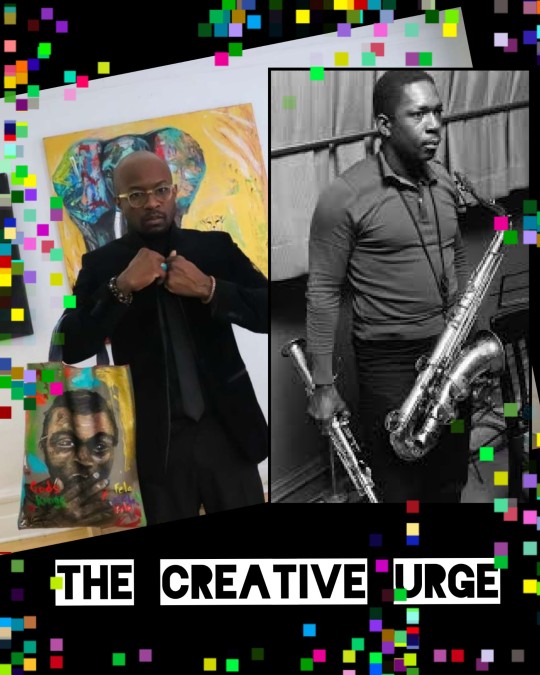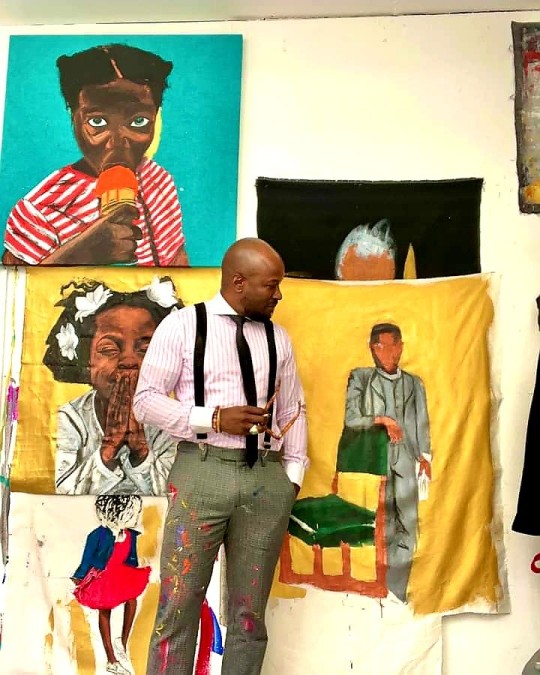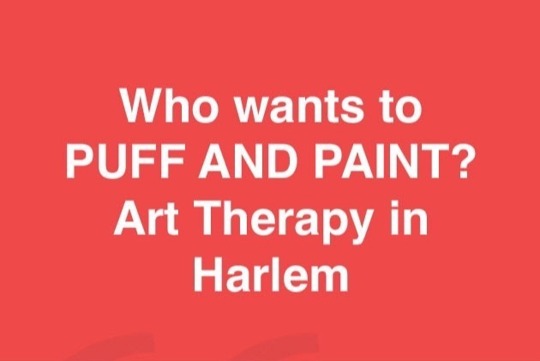#alexanderboyce
Explore tagged Tumblr posts
Text
THE CREATIVE URGE : Mental Health & Creativity

CREATIVES JOHN COLTRANE & ALEXANDER BOYCE

JOHN COLTRANE. John Coltrane is a famous jazz musician noted to be a genius. His works are transcendental and mind blowing to those that dare to explore and are considered to be critics of fine art. John passed away at the early age of 40 due to cancer, but his known alcoholism and heroin addiction affected not only his health, but his personal spiritual beliefs, endeavors and relationships. Some or perhaps most people feel that the psychotropic drug use was what enhanced his creative expression, but he definitely displayed mental health issues including impulsive neurotic behaviors and practicing nonstop. His character type is coined to be an obsessive creative.
Coltrane did quit heroin cold turkey, and later said he had heard the voice of God during his brutal withdrawal. “I experienced, by the grace of God, a spiritual awakening which was to lead me to a richer, fuller, more productive life,” Coltrane said in the liner notes of A Love Supreme. He went on to create even his album Giant Steps and more of America's finest art form.
Coltrane expressed his virtue of creativity in a letter that “Innovators always seek to revitalize, extend and reconstruct the status quo in their given fields… Quite often they are the rejects, outcasts, sub-citizens, etc. of the very societies to which they bring so much sustenance. Often they are people who endure great personal tragedy in their lives. Whatever the case, whether accepted or rejected, rich or poor, they are forever guided by that great and eternal constant — the creative urge.” Coltrane has gained followers after his death and is declared a saint. The Saint John Coltrane Global Spiritual Community holds A Love Supreme Meditation each month.

ALEXANDER BOYCE. Another current visual artist, by the name Alexander Boyce of Harlem, just woke up one day and decided to paint. A musician, and former leader of a band, Boyce now creates art and fashion accessories for people who love art and want to make a statement. His IG profile reveals a Puff N Paint art therapy event. Boyce answered my DM and told me that weed is in fact legal in NY and that in those art therapy sessions they smoke weed, and paint self portraits, and then examine how they see themselves based on the work. The psychotropic drug enhances the activity and artistic creative experience. It is most common to see Sip N Paint but due to legal allowances other drugs can and will receive welcome with creative/artistic experiences that prove to be therapeutic.
Boyce’s purpose is to unfold the feelings of self hate and inferiority imagery has inflicted on black people. His mission is feel good art that makes people happy, on everything and everywhere. Boyce found interest in art as a high school student and now gives his influence to Basquiat, Picasso, and Big Daddy Kane. Not sure what mental health change occurred but Boyce, literally woke up with the urge to paint, so he picked up his son’s little paint set and started painting. Notable changes occurred in his mind. His vision experienced a transformation as well, he went from seeing lines and shapes to seeing light and shade. Before that day, Boyce spent a lot of time composing jingles and music for reality t.v. Now his mind had a hunger for painting, and he spent most of his time doing so. He became fascinated with faces, and would stare at people in passing, realizing the beauty in each difference. This wild awakening was unlike anything Boyce had ever experienced and it led him to become more aware of others and himself. For Boyce painting is like music, it is about feelings.

CREATIVITY & EMOTION. There are many mental health benefits to being creative or participating in creative activities. Participation can include just enjoying fine art events. After experiencing trauma, artistic and creative activities can help us to relieve stress, release anger, lessen shame and deal with depression. According to the Collins dictionary a creative is defined as a person who has the ability to invent and develop original ideas, especially in the arts. Urge is defined as a strong wish or desire to do or have something. Emotions play a pivotal point in the development or advancement of our day to day activities. Those emotions, negative or positive impact the creative urge to explore. The main personality type associated with creativity is openness to experience.
Emotional traits of our personality have creative impact. Having an extroverted personality will enhance these experiences but all personality types will benefit from creativity in the arts. Emotional traits can also impact the type of domains creatives choose to partake. The domains of music and visual arts are linked to people high in neuroticism. Musicians, especially jazz performers tend to have a lot of ambiguity, which makes a lot of sense because jazz is based on a lot of improvisation. (Prof Rodriguez) Their traits, along with visual artists; are less likely to be emotionally stable (Fiest, 1998).
Arts therapy is finding a creative outlet for our trauma in a safe space for emotional expression. The long-standing view in psychology is that positive emotions are conducive to creativity because they broaden the mind.(Harvard Business Review 2015) Emotions can be traits or states of being. The creative process is fueled by our emotions.(Prof Rodriguez) Creative process flows of motivation, domain, idea generation, roadblocks, and product.
The creative urge can inspire creatives to find solutions in frustrating situations. Having the creative urge to do something and create something novel provides motivational intensity to produce art. Motivational intensity is playing an instrument like John Coltrane, or painting like Alexander Boyce. Both artists used their emotions to express. The art they provide is therapeutic for the artist and those that experience it. Coltrane about his music said "the emotional reaction is all that matters." They are two creatives that light the fire of their own creative urges.

CREATIVITY & MENTAL ILLNESS. Creativity is beneficial but has been linked to mental illness. Through time Plato and Aristotle described the creative genius as mad. Freud thought creativity was driven by repressed desires. In our time, humanists deem creativity as a pinnacle of healthy human psychology. During the romantic era, people believed that “madness” could free the imagination from constraints of conformity. As a result it was actually pretty popular for intellectuals and creatives to show signs of mental illness. (Prof Rodriguez)
Studies suggest that there is some elevated risk for mood disorders and highly creative people. One serious mental mood disorder is Schizophrenia, in which people interpret reality abnormally. People high in this trait do not progress well as creatives, but studies show that perhaps inheriting part, but not all of this genotype may be beneficial to creativity. This personality type called Schizotypy, are often described as odd or eccentric and usually have few, if any, close relationships. Negative effects of this type have a diminished ability to produce, but positive schizotypy adds something unique or weird to their behavior that make them stand out as creative. People high in schizotypy tend to score higher on creative tests, vs people clinically diagnosed with schizophrenia that score low. (Prof Rodriguez)
New evidence points out that only normal range differences in mood and perception may have some benefit to creativity, but not full blown mental illness. It is always best to keep a healthy body and mind for the creative urge. Coltrane is called a genius and his name is more recognizable not only to the arts community but the psychology community as well. Coltrane practiced nonstop but his openness to experience led him to be an icon. His creative urge was so strong it feels like you're baptized with the holy ghost when you get hit with his sound. The artist Alexander Boyce just woke up one day and something changed in his mind, he became obsessed with painting all of a sudden. He literally woke up with an urge. The creative urge.

CREATIVITY & SUBSTANCE USE. Substance use has an effect on mental capacity and creativity. Research has found that some use can actually enhance our creativity and openness to experience. Over 80% of the population uses some type of psychotropic drug. Caffeine being the most widely consumed psychotropic drug in the world with 85% of adults consuming at least one caffeinated drink daily. (Zebelina & Sylvia 2020 ) Other common drugs used by creatives and the general population include alcohol, marijuana, and hallucinogens. The substances can decenter the artist while offering new and unique perspectives that facilitate creativity but their ill effects must be balanced in the exchange.(Prof Rodriguez)
There is a greater prevalence of alcoholism among creatives. Full blown alcoholism will not result in creativity, but usage can be related to trauma and self expression. Experimental studies have found that low doses of alcohol enhance idea generation and insight. Positive beliefs about alcohol and creativity make it normal to find alcohol within the creative community. Musicians are mostly performing at events that serve alcohol, and it is more popular to attend a Sip N Paint event where you drink alcohol, listen to music and paint. Marijuana use is related to openness to experience, the main personality exhibited by creatives, but negative effects can occur on long term users.
The process of creating music, art, or literature, could be so cognitively demanding that artists may seek to dissociate from reality as a way to release stress, not as a tool for their art.(Neurology Live) The psychotropic substances shift their typical frame of mind towards a creative product. Alcohol, and drugs are used by creatives like musicians and painters to alter their state of consciousness. Ways to counter using drugs and decenter from the cultural norm include meditating, or exercise as a way to alter the state of consciousness and develop the creative process.
Holistically, alcoholism and drugs can be detrimental to your health, and it is always best to avoid anything that can lead to addiction and inhibit the creative process. Overall healthy individuals have the highest capacity for creativity.(Prof Rodriguez) Musician John Coltrane quit his addiction to heroin, and found his creative process to be liberating through meditations, prayers, and awakenings. Artist Alexander Boyce uses a psychotropic drug to enhance his creative experience. Both creatives have found substance not in the usage of drugs but through their own creative urge.

CREATIVITY & HEALING. Both Coltrane and Boyce experienced an awakening and call to the creative urge. The use of psychotropic drugs is common among creatives and can have some mild benefits on the creative process. The many benefits of creative/artistic expression such as playing an instrument like Coltrane or painting like Boyce, help relieve mental health issues. Using art as a therapy can help creatives cope with trauma and serve as creative outlets for others to do the same. As quoted by John Coltrane," I want to be the force for good”, both creatives John and Boyce are using their creative force for good. Both artists relate being rejects, outcasts, sub-citizens, and their artforms serve as advocacy for change. Drug use adds to the stereotypes that artists, creatives or most users face, yet we don’t see much research about the everyday and common use of caffeine which may help with achieving convergent thinking tasks like solving problems. (Zebelina & Slylvia 2002) It's very common to toast or partake in “spirits” or wine at social fine art events. The Puff N Paint event seems like a bold move but the marijuana is used to enhance the arts therapeutic experience. The effects of psychotropic drugs on creativity are still being explored, but as laws change so may stereotypes and the common use for enhancement in the creative process. The virtue and the value of creativity has allowed both artists to improvise and act in innovative & novel ways. Creativity provides healing. People who engage in cultural or fine arts activities have a lower risk of developing chronic pain, dementia and depression.
Creativity provides a better mental and physical outcome no matter the ability. Genuine findings point to the short and long term benefits of creativity. The creative intensity of Coltrane and Boyce could be a troubled psyche but their push towards creative expression was an urge to heal. Using art to thrive beyond survival is healing as, Coltrane says, “they are forever guided by that great and eternal constant — the creative urge”.
By: Andria Jones - Psych 365 - Professor Rodriguez UNCG SPRING 23 - Psychology of Art, Creativity, & Genius
youtube
References
Chasing John Coltrane’s God Dream From A Love Supreme To “UltraLight Beam” - Okayplayer
Coltrane Church
Creative urge definition and meaning | Collins English Dictionary
Drugs and Creativity: Fact or Fiction?
Meet Alexander Boyce - CanvasRebel Magazine
The Emotions That Make Us More Creative
The Mental Health Benefits of Creativity

#Creativity#Genius#Youtube#quoteblogger#lovefya#johncoltrane#creatives#psychologyofart#artpsych#artist#musicians#alexanderboyce#john coltrane quotes#mental health#blackpsychology#black art#black artist#black culture#black tumblr
11 notes
·
View notes